Running an aerial firefighting company is a complex task, and running one with operations in two countries is a feat few could pull off. However, that is precisely what Bob Chalifoux, his wife, Lisa, and two of his sons have accomplished over the last several decades.
History
Bob Chalifoux started his aviation career in Canada, eventually working up to taking a position with Okanagan/Canadian Helicopters (which would later become the global oil and gas helicopter company CHC.) There, he began flying Jetranger/Astars/ Bell 212 and Sikorsky S61 and conducting seismic work where he would move seismic drill rigs in the mountains. This continued to improve his pilot skills thanks to the complex flying environment that led him to become somewhat of a specialist in the field over the years.
As with many companies, HeliQwest was founded on one part luck and the other part experience and taking risks. After a falling out between the seismic company and Okanagan/Canadian, the seismic company approached Bob directly, asking him to take over the contract on his own.
Chalifoux turned to friend Michael OReilly, owner of Eagle Copters in Calgary, as he did not have a helicopter at the time. OReilly would lease him a Bell 205 to begin operations as a solo operator in Canada in 1994.
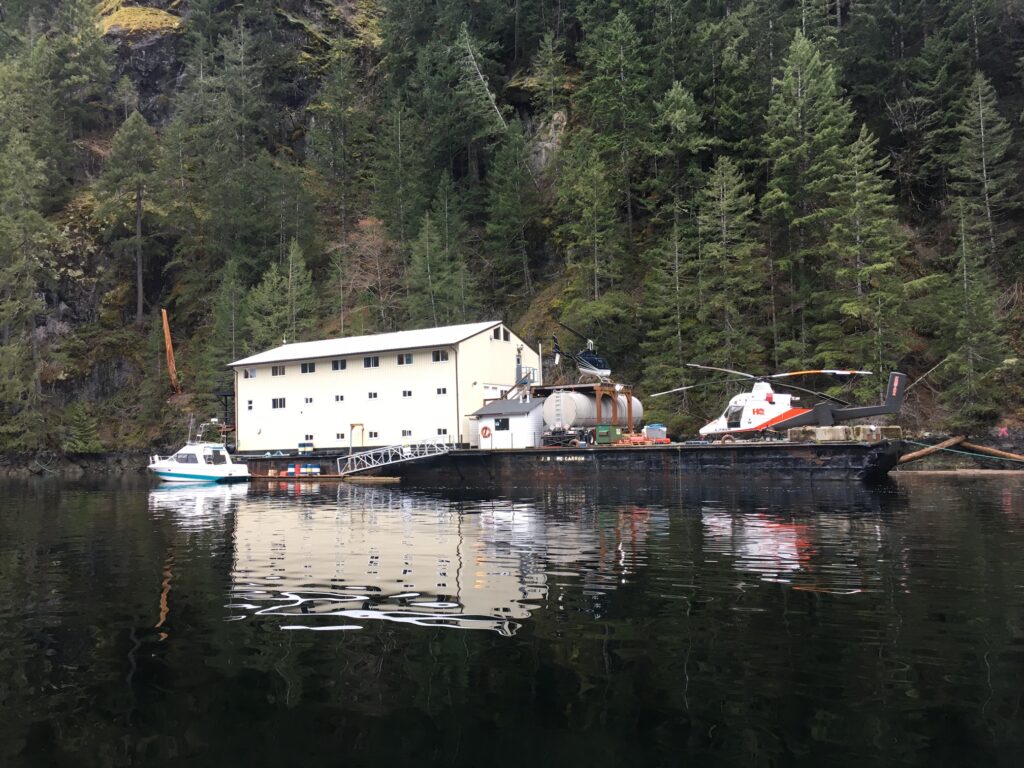
Things moved quickly for HeliQwest, with requests from the seismic company to add another aircraft the following year and the next several years following, which resulted in the company within four years now having 4 Bell 205’s in the fleet that would also work logging contracts in the winter months in Canada.
After several years in operation, and much frustration with unreliable ground crew, Chalifoux, who was ever the amateur engineer, decided to put his mind to building a light grappling system that could be operated as a single pilot operation without a ground crew. Chalifoux then patented a Heli-Harvester system to cut standing timber from the helicopter.
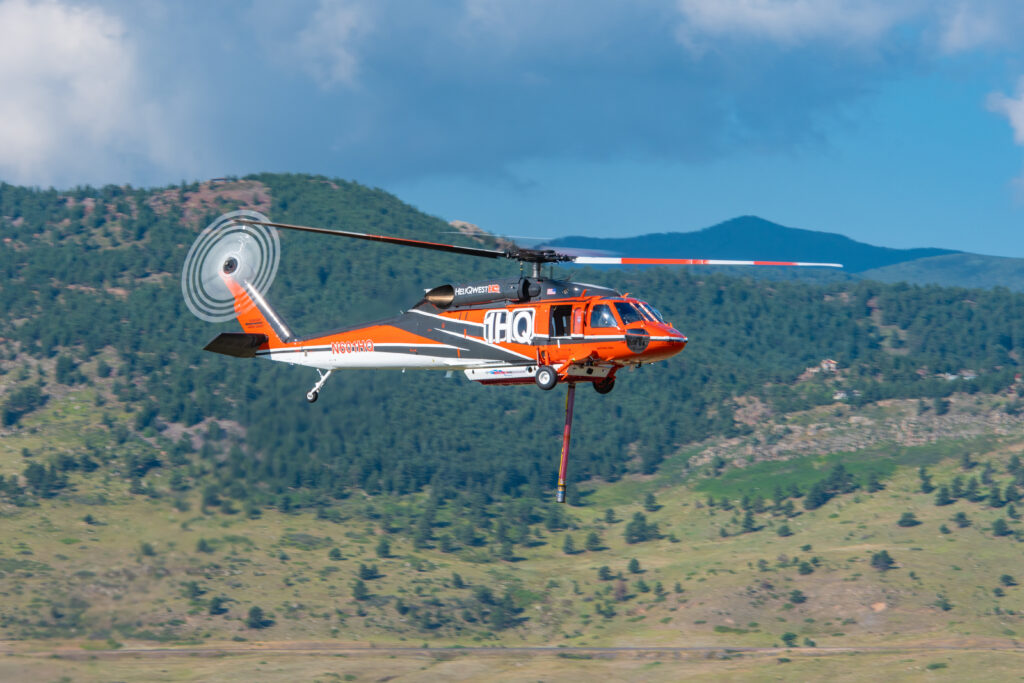
The system he created allowed the pilot to select a tree, place the grappling system and saw on the tree, trim, cut, and grab the tree for removal to a pickup location. This was previously done with the assistance of several people on the ground. This process has attracted the attention of many logging companies, who see value in being able to process logs on short notice to maximize fluctuating market demands. After many revisions over the years, his invention is now utilized in logging operations in British Columbia.
With the assistance of his father being a dual US/Canadian citizen, Chalifoux soon created a website for HeliQwest that began looking for work in the lower 48. The first contract he won stateside was to provide logging transport with a Bell 205 in Grand Junction, Colorado, in 1996, bringing his custom grappling apparatus, which would demonstrate to customers how effective it was. That contract then led to power company contracts and rapid expansion over the next few years for the company.
HeliQwest, over the years, had bases in Montrose, Colorado, Boeing Field in Washington State, Provo, Utah, and Las Vegas, Nevada, before settling in Denver, Colorado.
As luck would have it, the company that HeliQwest provided seismic work was bought out by an American company. That company retained HeliQwest to continue its work in the United States. It was flipping the work split between the Canadian “HeliQwest Aviation Inc.” and the US company “HeliQwest International Inc.”, which at this stage was now operating ten aircraft stateside and three in Canada, moving pilots who were also dual citizens between the two countries as work requirements demanded.
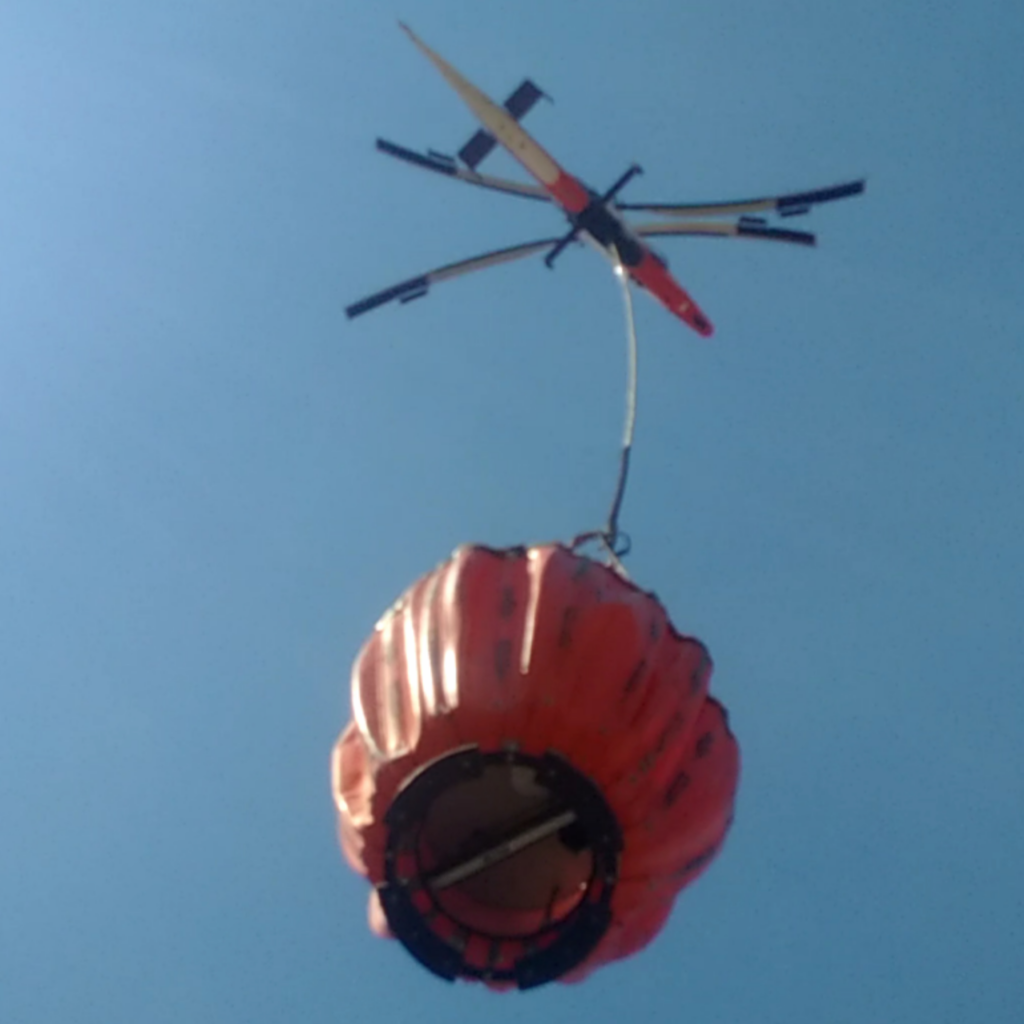
Chalifoux credits the company’s growth to continually providing the best service it can to customers, having never needed to advertise what they do and relying on word of mouth, which has served the company well during its over three decades of operation in both countries.
Firefighting
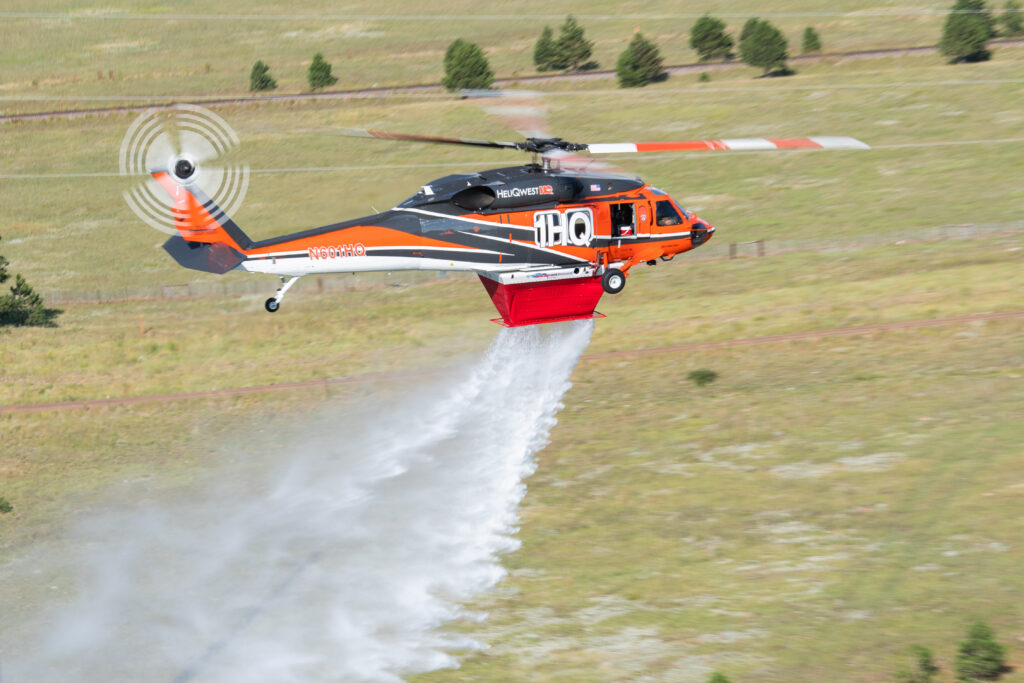
“We have never stopped changing since the day we started the company,” said Chalifoux, who stated that firefighting operations first started for the company in Canada as their seismic work would shut down as soon as there was a high fire risk. Lucky for HeliQwest, the helicopters conducting seismic work would be hired to fight the fires, prompting Chalifoux always to keep a bucket loaded on site when working seismic. This would allow the aircraft to switch missions into a call-when-needed helicopter for firefighting missions, keeping the aircraft working.
Initially, all of HeliQwest’s aircraft were on a call-when-needed contract. Over the years, Chalifoux has moved to a mix of call-when-needed and exclusive use contracts for his fleet of 205s, K-Max’s, and recently the three UH-60A+ Blackhawks the company has acquired. The company also has a mix of bucket machines and is moving into more tanked aircraft, as required. A bucket aircraft is typically on a 150-day contract. In contrast, according to Chalifoux, a tanked aircraft will get an additional 30 – 50 days on a California or Texas contract.
Fleet & Staffing
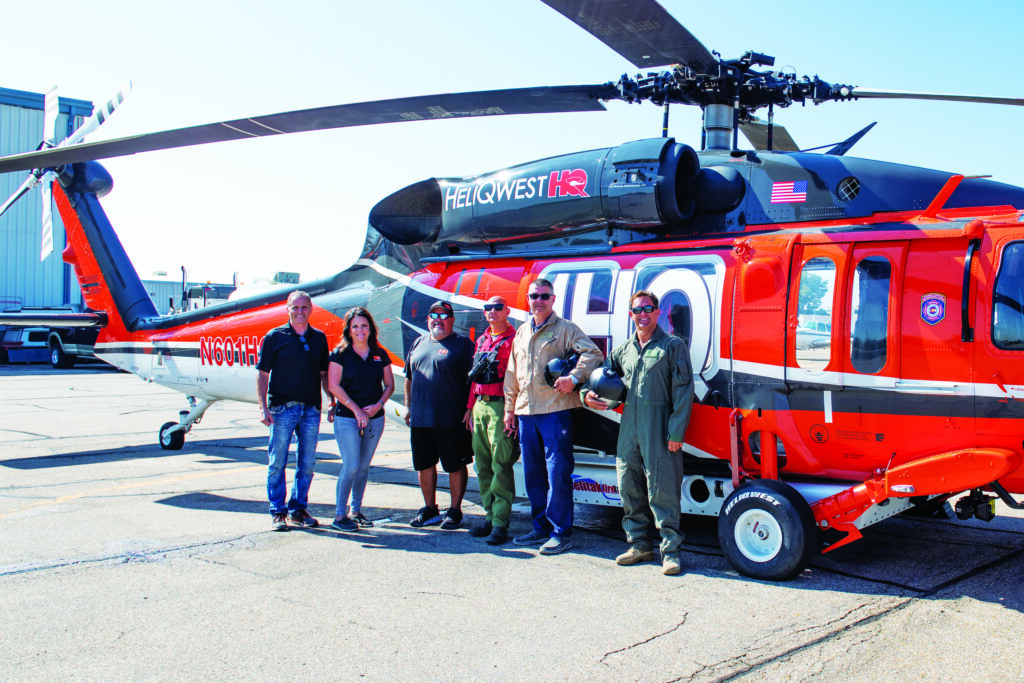
Chalifoux has continued to grow HeliQwest over the years, building staffing up to 120 employees between the US and Canada. The company now operates 21 helicopters that are a mix of Bell 205s, Airbus AS-350/H-125s, K-Max, and Sikorsky UH-60A Blackhawks that run various Bambi Buckets, Helitak and Isolair tanks.
Regarding long-term plans for aircraft, Chalifoux will continue to streamline their operation, although staying in the type 1 market, and will be selling off some aircraft in the future with a US fleet of four UH-60As. Four K-Max’s, four Bell 205’s, and 3 to 4 B3E- A-Stars.
To finish out the fleet of aircraft, the HeliQwest fleet is serviced in the field by fuel trucks and work trailers as well as two specialty-built tractor-trailers (Heli-Haulers) that can be sent into the field at a moment’s notice to provide ground transport of an aircraft to a location, keeping ferry costs down and hours put on an aircraft to a minimum. These tractor-trailers have delivered aircraft around the United States, Canada, and even to contracts in Mexico.
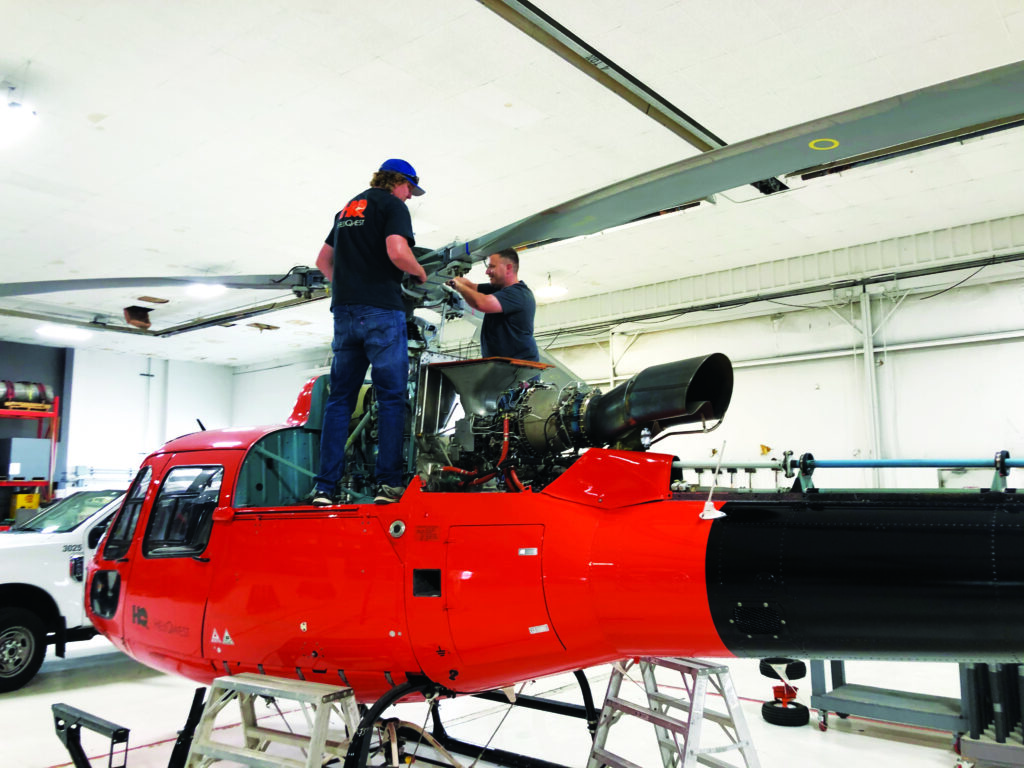
A unique part of operations that sets HeliQwest apart from other firefighting-only functions is using a unique piece of equipment on the logging side. A 40-man floating camp/barge is used on the British Columbia coast to support winter/spring logging operations. It is supported by a tug and two additional heli barges that can support Heavy and medium lift aircraft such as a Kmax and Sky Crane. This camp could also be used for firefighting operations if the need arises but is primarily used on the logging side that can land and refuel aircraft, provide maintenance, and accommodate an entire crew in remote locations on BC’s mid to north coast.
Adding Hawks
Over the last few years, HeliQwest has added three UH-60A+ Black Hawks to their firefighting fleet, with plans for a fourth in the long term. Each has been fitted with the relatively new, Australian-manufactured FT4500 expandable Black Hawk tank from Helitak. Unlike other external tanks made for that body style of aircraft, they do not require fitting a modified high skid gear as seen on the S-70i Firehawk and similar models. The aircraft can be converted back to a bucket ship in 30 minutes by simply detaching the tank. This is very effective when working in areas where water is scarce as the power fill bucket can get water from nearby creeks and rivers where tall trees are not a factor for a bucket on a Longline.
Chalifoux explains that the company has always been a heavy lift company, so moving into the hawk was a natural progression for HeliQwest.” The heavy helicopter thing is a significant component of what we do, so we said, “let’s try one of these Blackhawks out!”
This came to fruition as Bob and his wife sat in Palm Springs and monitored several aircraft on a bidding site over the Christmas season. They successfully bid on two of the aircraft they currently operate. Alabama-based Arista Aviation did the completions on the aircraft before they were put to work. One of the hawks successfully secured a five-year contract with the Colorado State Division Of Fire Prevention and Control and a five-year contract in Australia for NAFC.
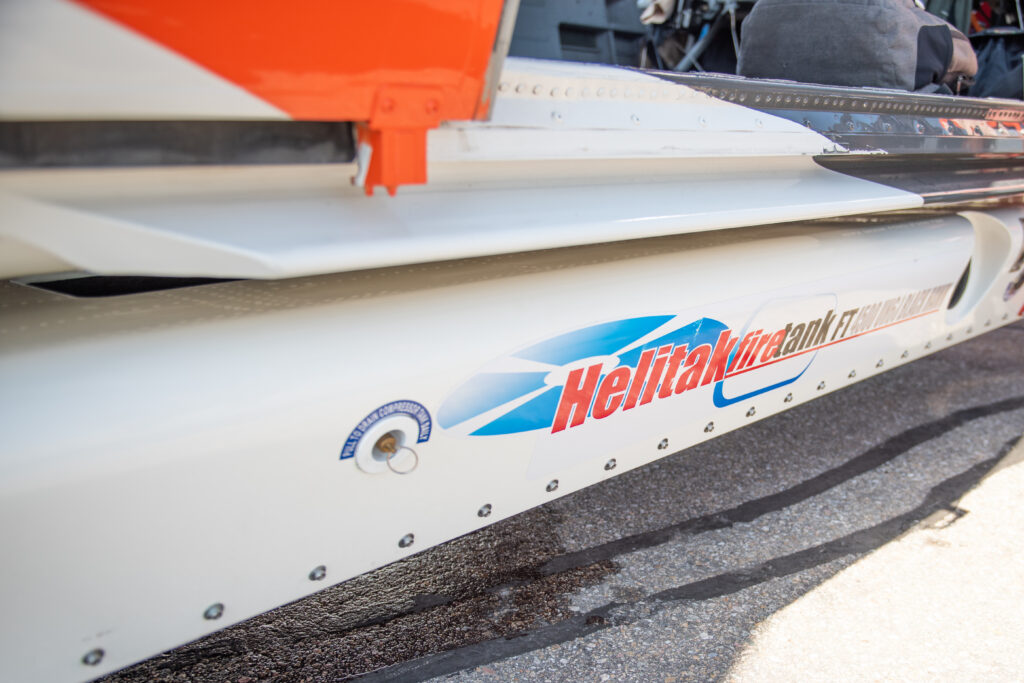
Factoring in the high-altitude environment of Colorado and many other areas of their aircraft work, Chalifoux also requested the completion be as light as possible, thus allowing for a lightweight aircraft in a hot and high environment. The hawks now split their time between working in the United States and Australia between each fire season, working in partnership with Wollongong, Australia-based Touchdown Helicopters during the Australian fire season during the US winter.
Training
While training varies greatly, as do requirements for each role in each country the company operates in, Chalifoux is happy that the company now operates hawks. Chalifoux stated they can now find former military pilots with enough hours on type, so the training centers significantly on the firefighting piece. Military aviators come with thousands of hours on type and must be taught the intricacies of safely fighting fire. They do this by pairing former military aviators new to the company with seasoned fire pilots to provide their training.
Facilities
HeliQwest operates a facility near Edmonton, Alberta, and Nanaimo, BC. Canada, in addition to the US company headquarters, which is located at Rocky Mountain Metro Airport in Broomfield, Colorado, with a sub base in San Diego, CA. Denver houses the company’s part 145 repair facility and state-of-the-art paint booth where it can paint its aircraft.
HeliQwest obtained a type certificate encompassing all of the upgrades to make the HQ-60+ a high-altitude performer for Fire and heavy lift. In the long term, HeliQwest plans to make available the type certificate to other new interested Hawk operators, which would include completions.
Difficulties of COVID
One of the more difficult things over the years for Chalifoux has been to keep staffing levels, which during COVID proved complex thanks to border closures for staff working in both countries and pilots wanting to move to the next stage of their career. Losing staff to competitors was another consideration after significant investments in training for unique aircraft like the K-Max, which requires a $50,000 investment per pilot for each training course, had pushed Chalifoux toward streamlining the aircraft the company operates.
Family Traditions
Bob and Lisa run the family business. Two of the three sons have been involved in the company business. One is a licensed aircraft mechanic who has transitioned to a flying role. The best pilots are now mentoring him in the organization that has directly transferred into the left and right seat of the Black Hawk. Lisa also handles the day-to-day business operations management of the company in the front office, and Bob works at the company headquarters.
The company is supported by “TEAM HQ” which is a combination of 10 managers and 100 plus employees that live and breathe the HQ Orange.
Conclusion
While Bob Chalifoux looks toward making the company more streamlined in the future, his creative mind continues to invent new ways to make the business continue to be successful way into the future. The company will continue to provide valuable services to the helicopter market in aerial firefighting through its innovations in the type 1 market, ensuring no end to the continued successes of HeliQwest.


